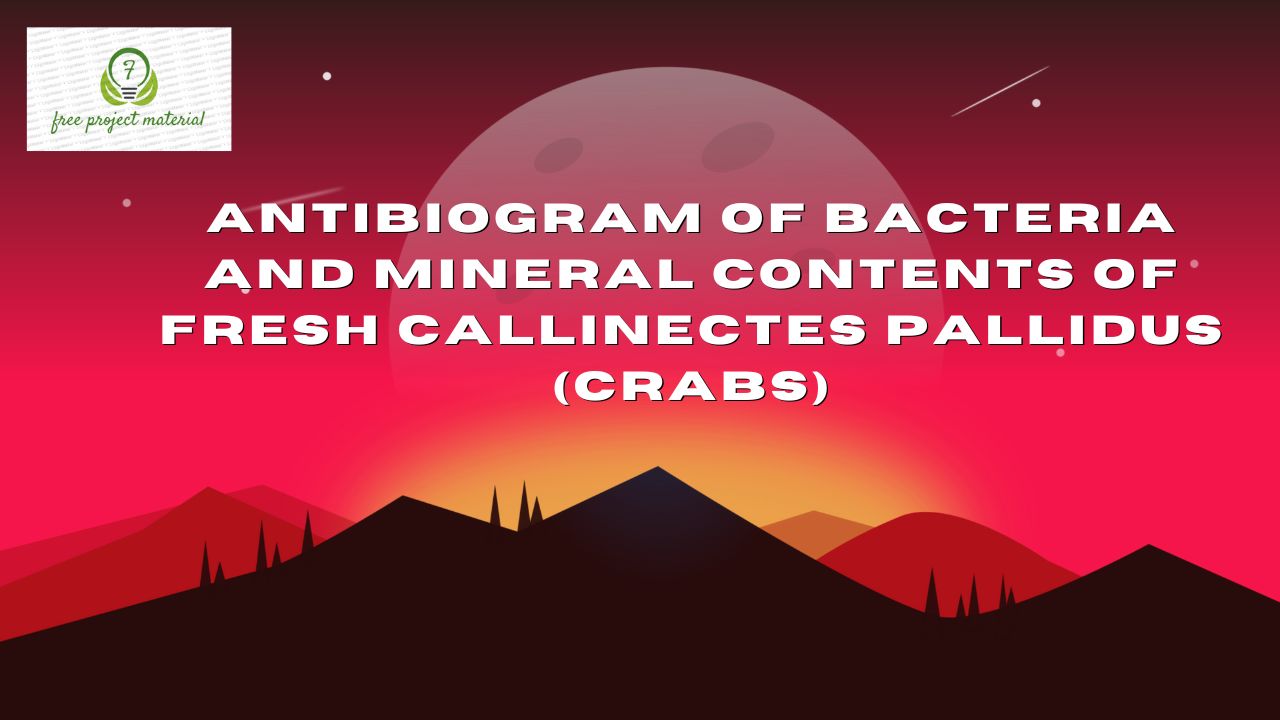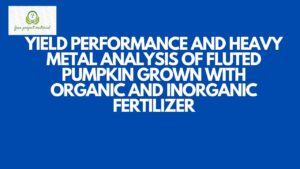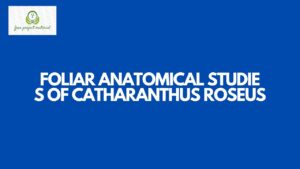ABSTRACT
This study is aimed to analyzed the Antibiogram and mineral content of non-lactose fermenters from fresh Callinectes pallidus sold in Ifiayong beach. The analysis followed all the standard of microbiological and biochemical analyes. The results reveal the presence of such bacteria as Shigella sp 40%, Salmonella sp 36% and Klebsiella sp 24%. A total bacteria count ranged from 1.01×106 cfu/g to 1.20×106 cfu/g and the result of the antibiotic susceptibility profile of bacteria shows that the organisms were highly sensitive to Ciproflaxacin and quite resistance to Sparfloxacin. The result of mineral content shows the concentration following the trend P>Ca>Mg>K>Na> Fe>>Cu>Mn>Zn. This analysis revealed that Callinectes pallidus habours a good number of bacteria. Therefore, proper processing of the crab should be carried out and proper hygienic practices should be ensured to avoid poising risk of contamination to consumers.
TABLE OF CONTENTS
PAGES
Title Page – – – – – – – – – i
Declaration – – – – – – – – – ii
Certification – – – – – – – – – iii
Dedication – – – – – – – – – iv
Acknowledgements- – – – – – – – vi
Abstract – – – – – – – – – vii
Table of Contents – – – – – – – – viii
List of Tables – – – – – – – – xi
CHAPTER ONE: INTRODUCTION
1.1 Background of the Study – – – – – – 1
1.2 Aim and Objectives of the Study – – – – 2
1.3 Scope and Limitation of the Study – – – – 3
CHAPTER TWO: LITERATURE REVIEW
2.1 Description of Callinectes pallidus – – – – 4
2.2 Origin and Distribution of Callinectes pallidus – – 5
2.3 Reproduction and Lifecycle of Callinectes pallidus – – 6
2.4 Scientific Classification of Callinectes pallidus – – 7
2.5 Human Consumption of Callinectes pallidus – – – 8
2.6 Non-Lactose ferments Bacteria Pathogens causing public
health risk for Seafood Consumption – – – – 10
2.6.1 Salmonella sp – – – – – – – 10
2.6.2 Shigella sp – – – – – – – – 11
2.7 Mineral Contents of Callinectes pallidus – – – 11
2.8 Essential Mineral Nutrient of Humans – – – – 12
CHAPTER THREE: MATERIALS AND METHODS
3.1 Sample Collection – – – – – – – 14
3.2 Sterilization of Glasswares – – – – – – 14
3.3 Preparation and Sterilization of Media – – – – 15
3.4 Sample Preparation and Inoculation – – – – 15
3.5 Enumeration of Bacterial Isolates – – – – 16
3.6 Purification of Bacteria Isolates – – – – – 16
3.7 Morphological Identification/ Biochemical
Characteristics of Bacterial Isolates – – – – 17
3.8 Antimicrobial Susceptibility Test – – – – 18
3.9 Analysis of Mineral Content of Callinectes pallidus – – 19
3.9.1 Digestion of the Samples – – – – – – 19
3.9.2 Determination of Mineral Elements – – – – 20
CHAPTER FIVE: RESULTS AND DISCUSSION
4.1 Results – – – – – – – – – 21
4.2 Discussion – – – – – – – – 28
CHAPTER FIVE: CONCLUSION AND RECOMMENDATIONS
4.1 Conclusion – – – – – – – – 37
4.2 Recommendations – – – – – – – 38
References
Appendix
LIST OF TABLES
Table 4.1 Total Bacterial Count of Callinectes pallidus – – 24
Table 4.2 Percentage Frequency Occurrence of Bacterial Isolates – 25
Table 4.3: Summary of Morphological and Biochemical Characteristics of Bacterial Isolates – – – – – – – – 25b
Table 4.4 Antibiotic sensitivity profile of the Bacterial Isolates from
Callinectes pallidus – – – – – – – 26
Table 4.5 Mean Concentration of some mineral elements in Callinectes pallidus – – – – – – – – – 27
CHAPTER ONE
1.0 INTRODUCTION
1.1 Background of the Study
Callinectes pallidus are decapod crustaceans which typically have a very short projecting “tail (abdomen), usually hidden entirely under the thorax (Sammy et al., 2009). They live in all the world’s oceans in fresh water and on land. They are generally covered with a thick exoskeleton and have a single pair of pincers. Many other animals with similar names such as hemit crabs, king crabs, porcelain crabs, horse shoe crabs, stone crabs and crab lice are not true crabs, but many have evolved features similar to true crabs through a process known as carcinisation.
Crabs are excellent sources of high-quality proteins, superior to those in meat and poultry. They rank third after shrimps and lobsters for their esteemed seafood delicacy and also for the value of fishery they support (Sudhakar et al., 2011).
The chemical composition and nutritive value of crab meat have been extensively investigated in various part of the world. Shell fish is one of the important sources of protein provided from the sea and blue crab is one of the most important among them (Sakthivel et al., 2014). The crab meat contains many nutrients like vitamins, carbohydrates, minerals and free amino acids. Many therapeutic properties are attributed to the crab meat and it is used to cure asthma and chronic fever. Sea foods products have attracted considerable attention as important sources in the human diet. Apart from their delicacy, crustacean’s species such as shrimps, crabs and lobsters consist of amino acids, fatty acid other useful nutrients (Sriket et al., 2007).
1.2 Aim and Objectives of the study
The aim of this research is to determine the Antibiogram and Mineral Content of Non-Lactose Fermenters from Fresh Crab.
The above aim will be achieved through the following objectives;
- i) To isolate and identify bacteria associated with fresh Callinectes pallidus
- ii) To determine the Antibiogram of bacterial in Fresh Callinectes pallidus.
iii) To determine the Mineral Content in Fresh crab.
1.3 Scope and Limitation of the Study
This research project has been designed for the determination of Antibiogram of Non-Lactose Fermenters and mineral contents from fresh Callinectes pallidus and was faced with some challenges such as limited time frame for the completion of the study, financial constraint and interference of the research work with other academic activities. Notwithstanding these limitations, the research was successful through proper time and financial management.



